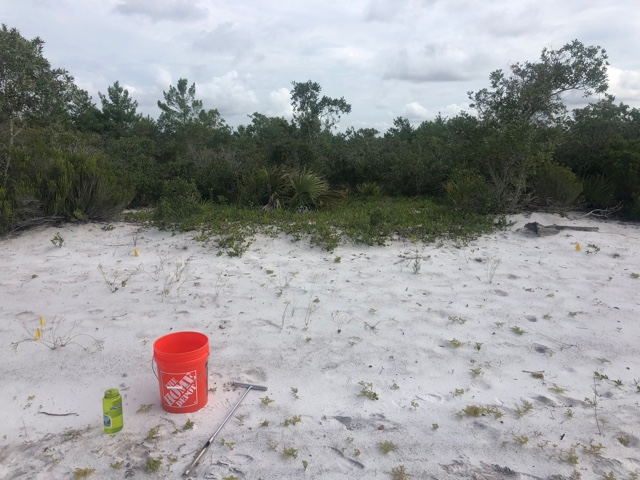
Author: Ella Segal
The life of a plant in the Florida scrub can be stressful, as plants routinely face heat, fire, intense wet and dry seasons, and animals that eat them. Still, plants find ways to survive despite these obstacles, including re-sprouting after fire, orienting leaves away from the sun’s direct rays, and producing chemicals to deter hungry animals. There are times, however, when conditions are so stressful that plants cannot cope and die. Soil seed banks, natural accumulations of seeds in the soil, are important safeguards that ensure entire populations don’t perish with individual plants.
“When plants produce seeds, they don’t all germinate into seedlings as soon as they reach the soil,” explained Ella Segal, the Vaughn-Jordan Plant Ecology research intern at Archbold. She continued, “for many species, the majority of seeds get buried in the soil and remain there until conditions are right for them to germinate into plants. The collection of seeds underground is what’s known as a seed bank.”
Seed banks in the Florida scrub may persist for decades and seeds often germinate after fire and other disturbances. “These disturbances kill the nearby plants, so if you’re a seed, it’s a great time to sprout and start your life as a young plant! You’ll have more sunlight, water, and nutrients than you would competing with older, larger plants. And from a population perspective, this mechanism is critical for renewing plant numbers just as they decline, keeping the population stable over time,” Segal said.
Supported by the Vaughn-Jordan Foundation, Segal has been investigating the seed banks at Archbold. Her research addresses how seed banks are influenced by both disturbance, namely fire and roadside disturbance (sandy tracks and trails), and by soil depth. “At the Station, roadside sands turn over as trucks drive by, and interior habitats (away from roadsides) regularly experience fire. I’m curious how each affects seed bank structure and whether structure then corresponds to aboveground plant density,” Segal said.
To test this, Segal collected soils in both roadside and interior habitats surrounding two scrub endemic plants, Scrub Hypericum (Hypericum cumulicola) and Papery Whitlow-wort (Paronychia chartacea). Each sample collected was divided into 2 cm ‘depth categories’ to consider effects of depth. To quantify the number of seeds of her target species, she has been watering the soils to prompt germination of any seeds present in the sample. She is also examining seeds from the samples under a microscope. Though the study is ongoing, preliminary results suggests that most seeds are found near the surface, and that seed banks are more prevalent in the natural (interior) scrub compared to roadsides.
“Seed banking is an important strategy for how plant species deal with challenging environmental conditions and maintain their populations through time,” says Dr. Aaron David, Direct of Archbold’s Plant Ecology Program. “Ella’s research helps explain the spatial structure of these seed banks, and sheds light on the hidden, underground components of these rare species’ populations needed to prevent their extinction.”

